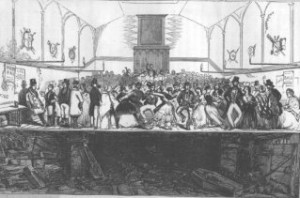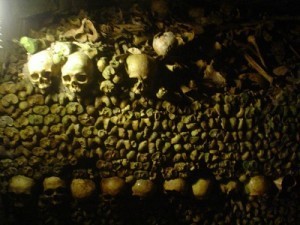Dancing on the Dead
Campbell Lawless is having a few sneaky outings between novels. Thanks to performances and magazines, Lawless has ventured into the short fiction format, encountering Delinquents in Pentonville, Pickpockets at Piccadilly, and Three tasty little Piglets in Portsmouth’s Spice Island. These will be collected anon into a tidy little volume, and the Portsmouth Fairy Tales contributions may be heard in Portsmouth Book Fest this October.
“I was new to the force, and new to the face of death. When my mother was taken by the cholera in’ 42, the custom was to hide the whole shebang from children. I was at school when she passed; at my godfather’s when she was buried.”
Researching my latest, working title Parson Tombstone, or Dancing on the Dead, I was astonished, not for the first time, to find Victorian fact wilder and darker than Victorian fiction. I recalled the tale of a vicar who’d profited by cramming as many burials beneath his church as he could, periodically turfing the bodies into the Thames and burning the coffins.
It took moments to check this on Lee Jackson’s extraordinary Victorian London site, where a visiting American laments Londoners’ ways with death.
But passing reference to St Enon’s Chapel shocked me. I’ve written about the Paris and Rome catacombs.
This scandal contributed to burial reform in the Burial Act 1852, which closed burial grounds within metropolitan London and allowed the establishment of large cemeteries in the then surrounding countryside in the mid-19th century.
Between scoring a licence for burials in 1823, till his death in 1842, the minister buried 12,000 people in a crypt 12 ft by 59 ft, while the faithful swooned and fainted from the aroma rising at their feet. Inspiriting stuff. Not to be outdone, the new owners bricked over the floor, laid a dance floor, and advertised Dancing on the Dead as their attraction – admission thrupence. Though a surgeon reburied the bodies at his own expense (in a single pit in Norwood), George Sanger, the circus impresario, gave up refitting it as a pantomime/circus venue when he learned that the remains of the minister still lay beneath.

Coffins piled in confusion – quantities of bones were mixed with the earth, and lying upon the floor of this cellar (for vault it ought not to be called ), lids of coffins might be trodden upon at almost every step.
More in George Sanger’s Seventy Years a Showman.





